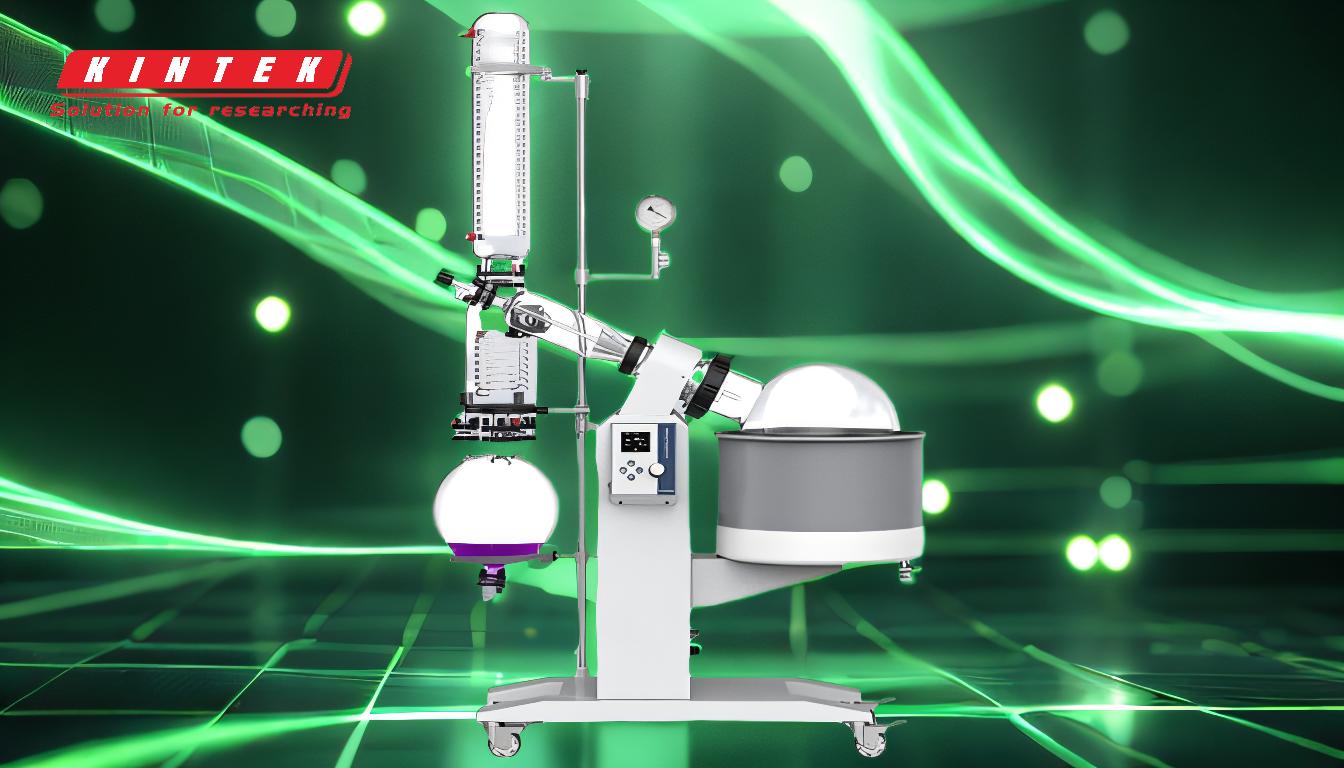In a rotary evaporation system, the pressure is a critical factor that directly influences the efficiency and effectiveness of the distillation process. Operating under vacuum (lower pressure) allows for evaporation at lower temperatures, which is essential for preserving heat-sensitive compounds like aromas and flavors. The optimal pressure setting depends on factors such as the solvent type, bath temperature, and system configuration. Proper vacuum control ensures a safer and more efficient process by preventing issues like bumping, foaming, and solvent loss. Maintaining consistent pressure is crucial to avoid disruptions in the distillation process and to achieve better separation of solvents and products.
Key Points Explained:

-
Role of Pressure in Rotary Evaporation:
- Lower pressure (vacuum) reduces the boiling point of solvents, enabling evaporation at lower temperatures. This is particularly important for heat-sensitive materials, as it prevents degradation or "cooking" of the contents.
- The vacuum level directly impacts the rate of evaporation, which is influenced by factors such as solvent type, bath temperature, and condenser efficiency.
-
Optimal Pressure Settings:
- Optimal pressure is not a fixed value but varies depending on the solvent being evaporated and the desired outcome. For example, solvents with higher boiling points require lower pressures to achieve efficient evaporation.
- Proper pressure settings improve distillation performance, reduce energy consumption, and minimize operational issues like bumping (sudden boiling) and foaming.
-
Factors Influencing Pressure and Evaporation Rate:
- Rotation Speed: Faster rotation increases the surface area of the solvent, enhancing evaporation. However, it must be balanced with the vacuum level to avoid excessive turbulence.
- Bath Temperature: Higher temperatures increase the evaporation rate but must be controlled to prevent overheating sensitive compounds.
- Condenser Temperature: Efficient condensation ensures that evaporated solvents are quickly recovered, maintaining the desired vacuum level.
- System Size and Configuration: Larger vessels or specific condenser types may require adjustments in pressure to achieve optimal performance.
-
Importance of Vacuum Control:
- Precise vacuum control is essential for creating a stable and efficient evaporation process. It allows for fine-tuning the pressure to match the solvent's properties and the system's capabilities.
- Proper vacuum control minimizes risks such as uncontrollable boiling, solvent loss, and safety hazards, ensuring a safer and more productive operation.
-
Maintaining Consistent Pressure:
- Sudden pressure changes can disrupt the distillation process, leading to issues like bumping or foaming. Maintaining constant pressure ensures smooth operation and better separation of solvents and products.
- Using an interface-controlled system or automated vacuum regulators can help maintain stable pressure levels, reducing fluctuations and improving overall efficiency.
-
Practical Implications for Equipment Purchasers:
- When selecting a rotary evaporator, consider models with advanced vacuum control features, such as digital interfaces or automated pressure regulation. These features enhance precision and ease of use.
- Ensure the system is compatible with the solvents and materials you plan to work with, as different solvents may require specific pressure ranges for optimal performance.
- Look for systems that offer flexibility in adjusting rotation speed, bath temperature, and condenser settings, as these factors work in tandem with pressure to achieve efficient evaporation.
By understanding the role of pressure in a rotary evaporation system and its interaction with other variables, users can optimize their processes for better results, improved safety, and enhanced efficiency.
Summary Table:
| Key Factor | Impact on Rotary Evaporation |
|---|---|
| Role of Pressure | Lowers boiling points, enabling evaporation at lower temperatures to protect sensitive compounds. |
| Optimal Pressure Settings | Varies by solvent type, bath temperature, and system configuration for efficient distillation. |
| Rotation Speed | Increases solvent surface area for faster evaporation; must balance with vacuum level. |
| Bath Temperature | Higher temperatures boost evaporation but risk overheating sensitive materials. |
| Condenser Temperature | Ensures quick solvent recovery, maintaining consistent pressure. |
| Vacuum Control | Prevents bumping, foaming, and solvent loss, ensuring safer and more efficient operations. |
| Consistent Pressure | Avoids process disruptions, ensuring smooth operation and better solvent separation. |
Ready to optimize your rotary evaporation process? Contact our experts today for tailored solutions!










